Submitted by Antonello Magliozzi
Exclusive: "Landscape is the Interception of an Evolutionary Moment of a Society" says Andreas Kipar
Italy Architecture News - Jul 24, 2018 - 05:59 9275 views
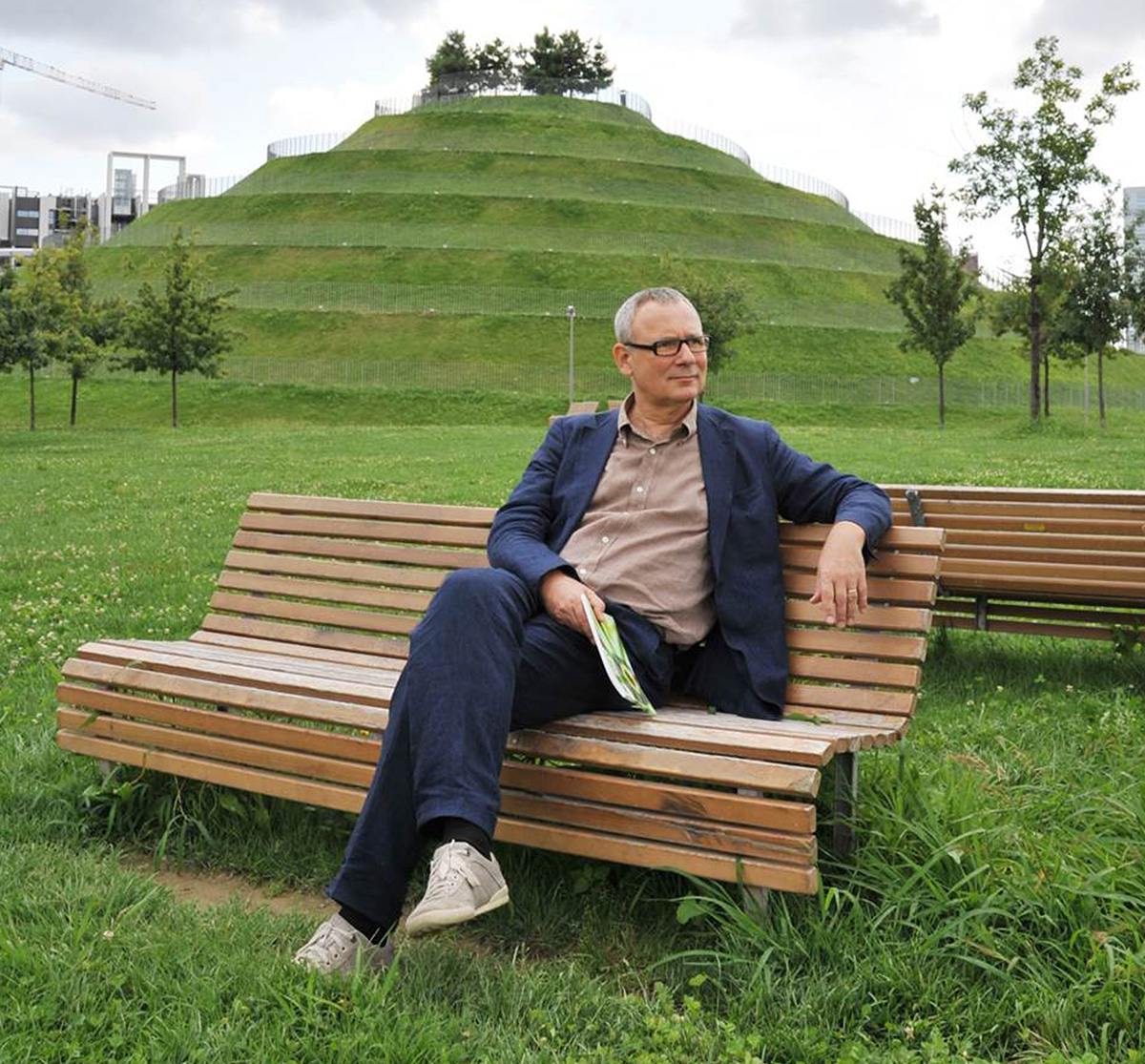
"The territory is like a bookcase, a shelving with a plot and a structure. It is up to us to interpret it, insert the thematic books in the right place. When we start a project, we think about the understanding of the territory, the shelving, after which we enter in its various sectors," says Andreas Kipar.
In an exclusive interview, Andreas Kipar, creative director and founder of LAND, professor at the Milan Polytechnic and the University of Naples, talks about his experience, concepts concerning the landscape, the design of space and spatial planning.
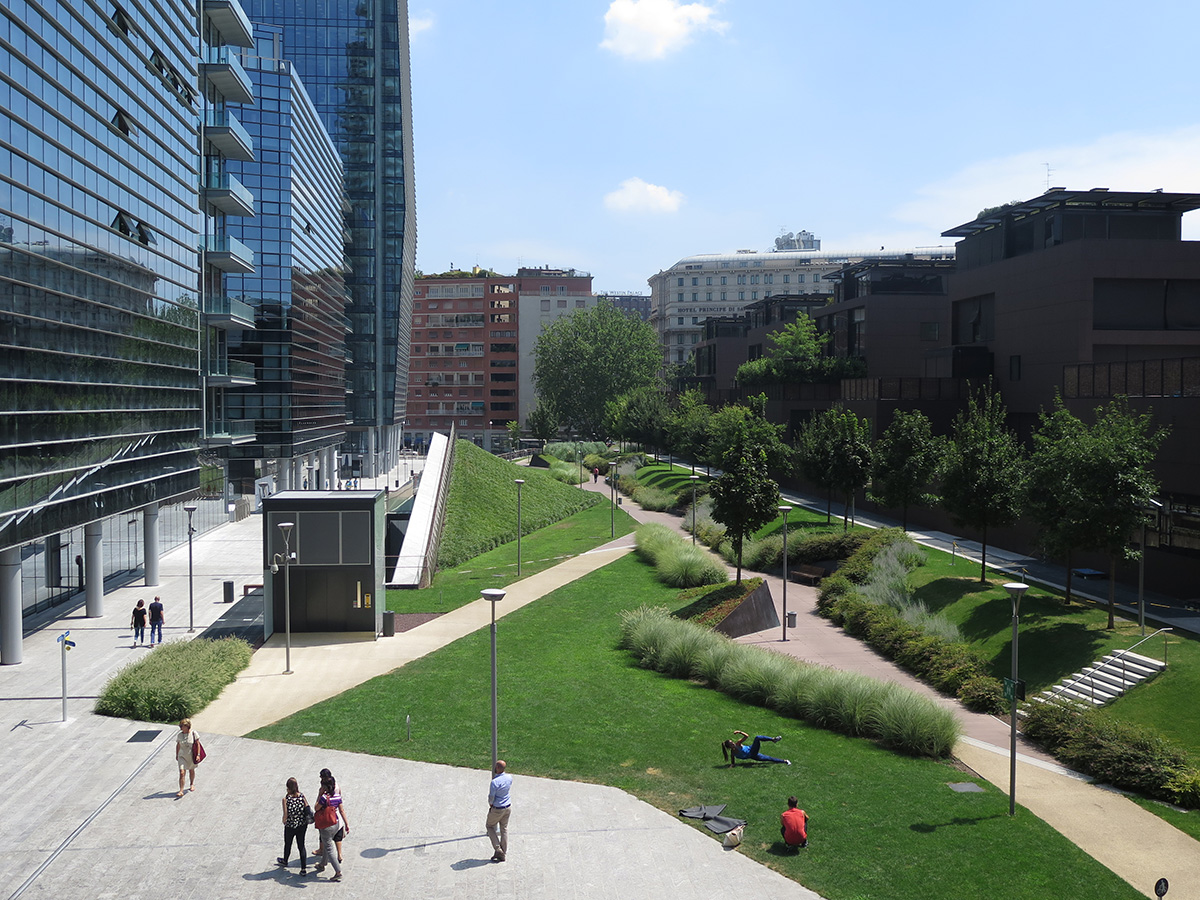
Porta Nuova, Milan (Italy), 2006 - 2016. Image © LAND
With a history that has combined more than 60 landscape architects, which has made more than 500 cities greener, contributing to the communities’ well-being with over 2,500,000 trees planted, Andreas Kipar is today among the leading researchers and designers in his Field. He began his professional career in Milan, Italy, with his studio LAND in 1990, when the Italian Law establishes a new evolution in the field of landscape protection, and continues since then also working in many other countries, in Europe and in the World, with a marked insight into the needs of the Times, a vision of the project that is attentive to the future.
Since the university period, and then during the profession, he elaborates and matures an authentic vision of the discipline, an own methodology through the live study of Italy, about its history, its values, its merits and its shortcomings. Italy, a country that "has always studied itself very much, that has always done very thorough studies, much more in-depth of those made by other countries, but rarely in an applicative way".
Studies that had to be interpreted and understood to be digested by everyone, which required an analytical work, a slow reflexive analysis, but also the need for urgent solutions, a holistic approach that Kipar synthesizes effectively in the motto: "To the virtue of slowness is associated the necessity of speed".
His modus operandi, his challenge, the attempt to fuse the slowness of Italian thoughtful thinking with the application efficiency of German management, the balance of a dichotomy that generates a strong link between different cultures. An approach that Kipar applies in his projects, analyzing the territory and giving answers to environmental constraints, especially in a country as rich as Italy. A way that evokes interventions attentive to the territory’s needs in compliance with the requirements of the constraints, allowing the environment to be preserved through its modification, as synthesized in an exemplary way in the famous phrase of "Il Gattopardo" by Tomasi di Lampedusa, recalled by Kipar during the interview: "Everything must change so that everything can stay the same”.
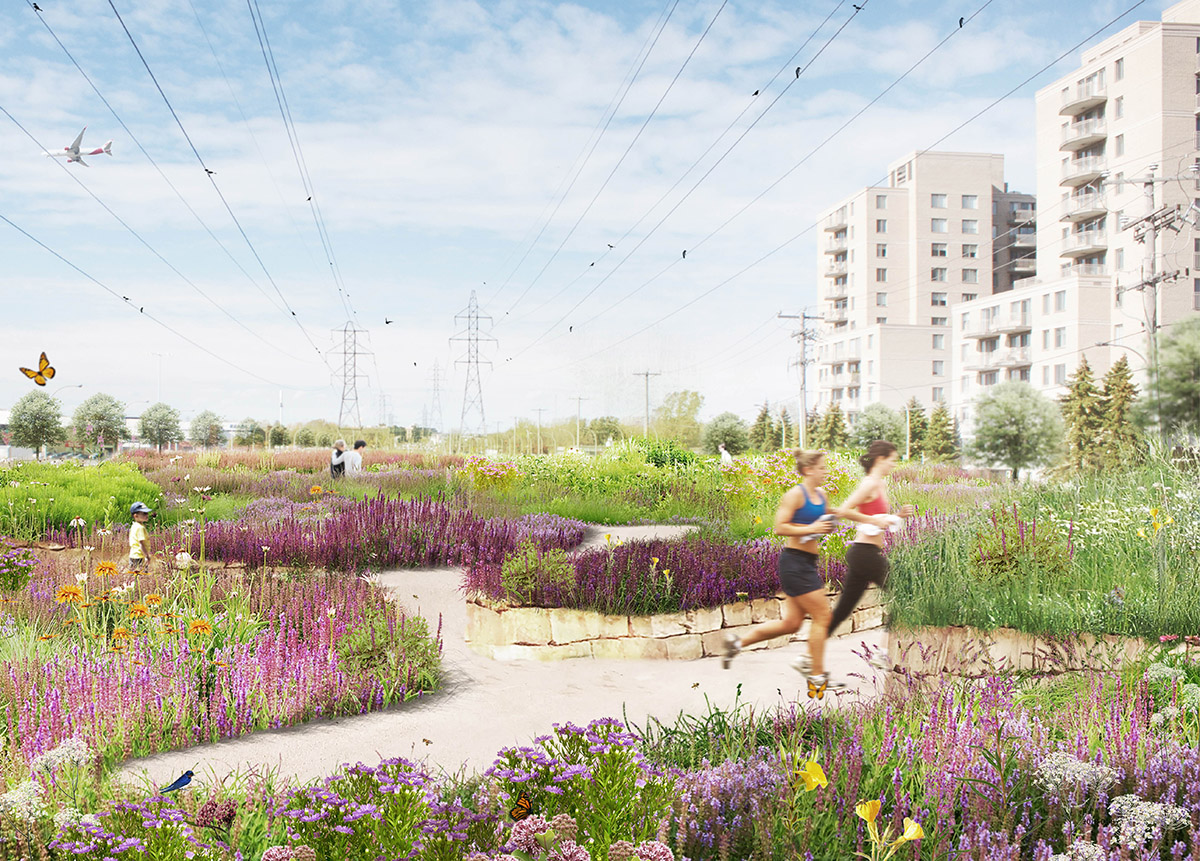
Vert-de-Gris Biodiversity corridor in Saint Laurent, Montréal (Canada), 2018. Image © LAND
Today Andreas Kipar reads into the contemporary times an important historical moment, a strong signal of fear towards the changes of society, an urgent need to rediscover the territory, to recover identity values, those of the Homeland. Signs of a new sensibility, also felt by architects such as Herzog & de Meuron, or by Rem Koolhaas who, last January, after forty years of thinking about megalopolis and globalization, writes in The Economist: "the future is in the countryside". Today, therefore, there is a strong focus toward the landscape as "interception of an evolutionary moment of a society", a greater need for projects aimed at the future with a long gestation, as they relate to Nature's timing, to a territory that must be narrated through the explanation of a "why".
For this reason, Kipar says: "the future is not predicted, it is designed, it is in our hands”. It is designed considering three themes: "awareness", "vocation" and "contact with nature". The "awareness”, in German’s defined authentizität as a new authenticity, "a renewed ethics of people, an attention to themselves and their world ". The "vocation", the understanding and "the listening to what is around us, about the territory". Finally, the "contact with Nature", the safeguarding, the recovery of the signs of life represented by the green. “The invitation addressed to humanity also by Pope Francis in “Laudato sì”, in the strong representation of the needs to care for our planet”.
This is why Kipar says: "today our projects are changing, they are becoming simpler in essence, and less sophisticated in thinking and design. Simplicity in the sense of efficacy, thanks to the help of the tools of technology, such as the LIM ®, which allows to verify, control the performance of the landscape, in every phase (plant, growth, maturity) and in every point of view: functional and psychological. "On the one hand, the agricultural productivity's quantification, the bioclimatic improvement, the increase of biodiversity, on the other the non-tangible, intangible benefits of contact with natural elements. Our projects are now born in the awareness of wanting to trigger a process of return to nature lasting one hundred years, through green infrastructures. We are not just talking about decommissioning and re-naturalization, but also about new productivity and new social life. Let's talk about inclusion".
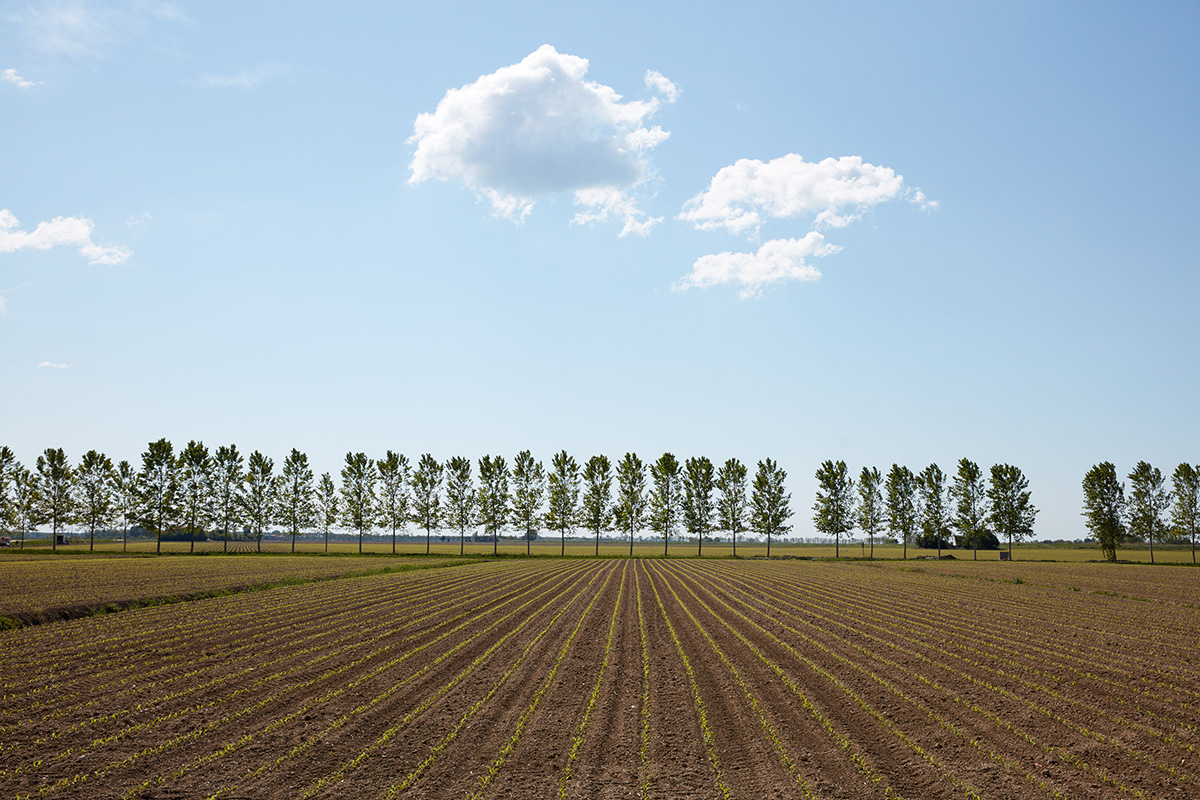
Ca’ Corniani landscape enhancement, Caorle (Venice, Italy), 2014 – ongoing. Image © Agostino Osio
Andreas Kipar is member of the scientific and research committee of Arcipelago Italia project, the Italian Pavilion at the Biennale Architettura 2018, the 16th International Architecture Exhibition currently underway since May 26th to November 25th.
On the important event Kipar says: "Mario Cucinella as curator of the Archipelago Italia has had the intuition to represent the dialectic of architecture between interior space and outer space, favoring the exterior. It represents Italy made of the hundred cities in the background of its landscape, almost as if it were a virtual journey for the beautiful Italy”. "Before this Biennale there had never been such an ambitious theme of free-space, open-space, something not related to design itself. No longer just the form, but also the free-space; not only that of the metropolitan areas where there are political interests, but also that of the open territory surrounding the so-called Archipelago”.
He says that this Biennale is shaping a new type of architects: "The architects of the future's landscapes, who will immerse themselves in the territory and become part of the landscape through their own eyes, those of the observer. Then, paraphrasing Renzo Piano's idea on careful interventions, they'll conceive the project as “mending an old sweater”. This through so many small interventions, which must not necessarily be expensive or glorious, which must be only one thing: normal, and which must fit into the dialectic of everyday life”.
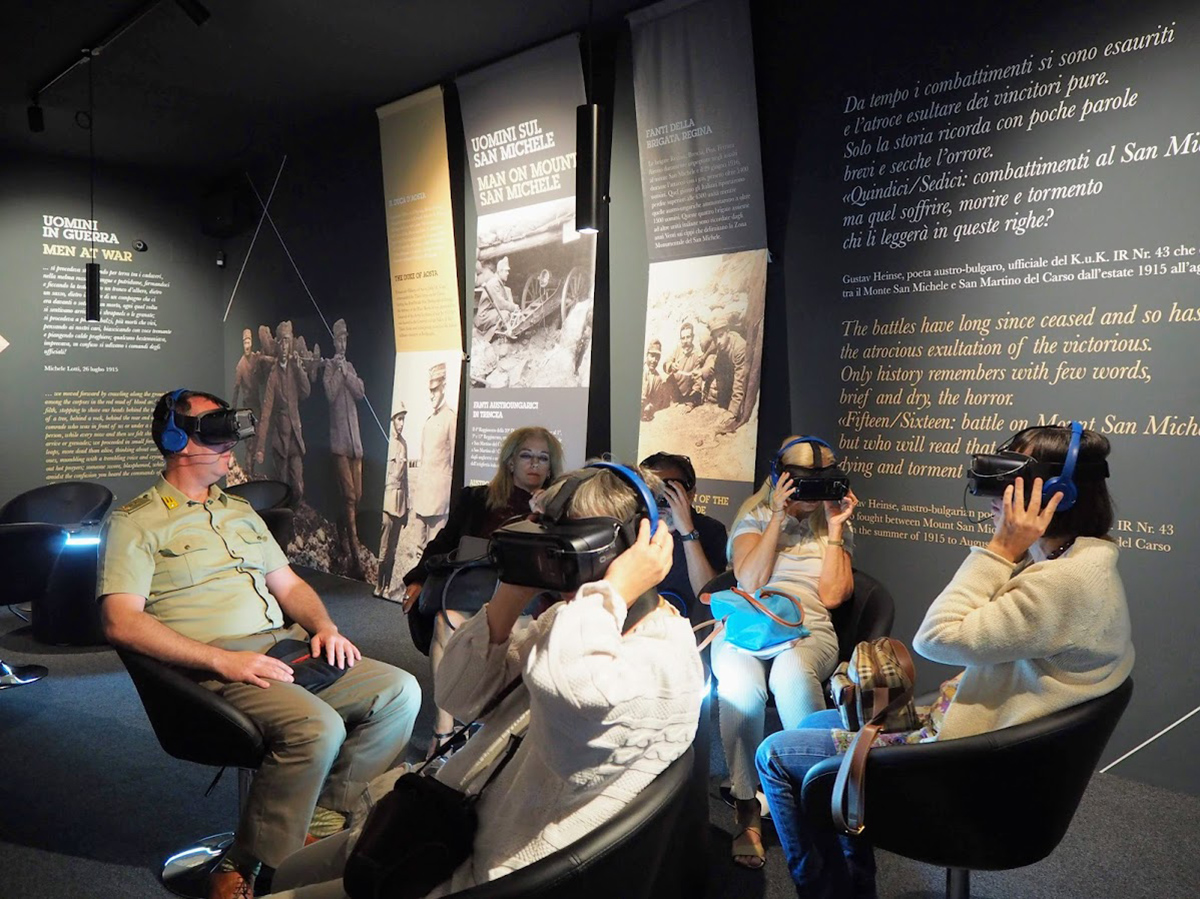
Reopening of the San Michele Historical Museum at San Martino del Carso – Masterplan “Carso 2014+. Image © LAND
A design strategy that can also be synthesized by the project curated by Andreas Kipar concerning the "reinterpretation in a contemporary key of the Monumental Zone of Mount San Michele”, theater of the Great War, and the new Multimedia Exhibition of the San Michele Historical Museum. An event currently underway in Sagrado, Gorizia province (Italy), since 29/06/2018 to 12/31/2018, which is part of a wider program framework called CariGO GREEN³ Foundation. A three-year development program that starts now from the Carso Isontino, that aims to extend itself to the entire territory of Gorizia through developments focused on synergies between the territory and its environment.
The enhancement of the entire Monte San Michele's Monumental Area and the new multimedia fit-outs mark the closing of the Great War's centenary and, through the language of new technologies, call on a sight towards the future.

Reopening of the San Michele Historical Museum at San Martino del Carso – Masterplan “Carso 2014+, Image © LAND
Read the full transcript of our interview with Andreas Kipar below:
Antonello Magliozzi: The interest in natural beauties, regarding monumental heritage and about the landscape began to appear in Italy at the beginning of the last century. It grows with the laws of the fascist period (Law 1089 and L.1497 of 1939), fundamental references of the discipline of the Italian Republic's landscape protection. It evolves further in 1985 with the Galasso Law (L.431 of 1985), establishing the bond of environmental protection throughout the national territory, which leading to the modern landscaping foundations. It is truly an extraordinary coincidence that just in those years you've founded your landscape design firm in Milan, which from that moment on you've carried out research and design activities continuously with particular regard to the Italian territory. Could you illustrate the cultural context in which you started your professional activity, and what are the inspirational foundations of your design methodology?
Andreas Kipar: Italy is one of the most studied countries in the world. Not by chance, when more than thirty years ago it was introduced the Galasso law, a landscape protection's comprehensive and integrate law, I realized that Italy has always studied much herself, has always done in-depth studies, much more in-depth than those made by other countries, but rarely in an applicative way. I was soon able to learn that the study was available, and that it was necessary to make it digestible, understandable, explicable. Thus, I've realized that the first job to do was to listen, to understand these studies. A work that requires a time, but not unlimited. Because the "territory cannot wait", the time is indeed linked to the needs for action. That’s why I think: to the virtue of slowness is associated the necessity of speed. Having myself a Germanic methodological approach, where the analysis requires a finalization through an "application", the application of knowledge, I set up my work trying to mediate the two needs.
I knew Italy through my studies, in the early years in Emilia, Parma, Reggio Emilia, Bologna, Cesena, Rimini up to San Marino, with a live knowledge of the territory. I learned that the the territory is like a bookcase, a shelving with a plot and a structure. It is up to us to interpret it, insert the thematic books in the right place. When we start a project, we think about the understanding of the territory, the shelving, after which we enter in its various sectors. The landscape has no limits, this makes our job beautiful, but on the other hand very difficult; we could even never stop! For instance, on the seven municipalities of Lake Garda I started my work with a municipality, then two, three, four and so on, up to seven, to make the largest project of arrangement of their landscape through pedestrian and cycle paths. Who would have thought it? The project proceeds by inclusion. What the project makes is the connection, the landscape connects. We put together many small local realities and skills through horizontal reasoning. We are able to identify structures of problems extended in the territory, to find solutions that concern multiple micro-systems. The landscape project is always a project for some social aspects: we are the landscape! It is never solo, always connective.
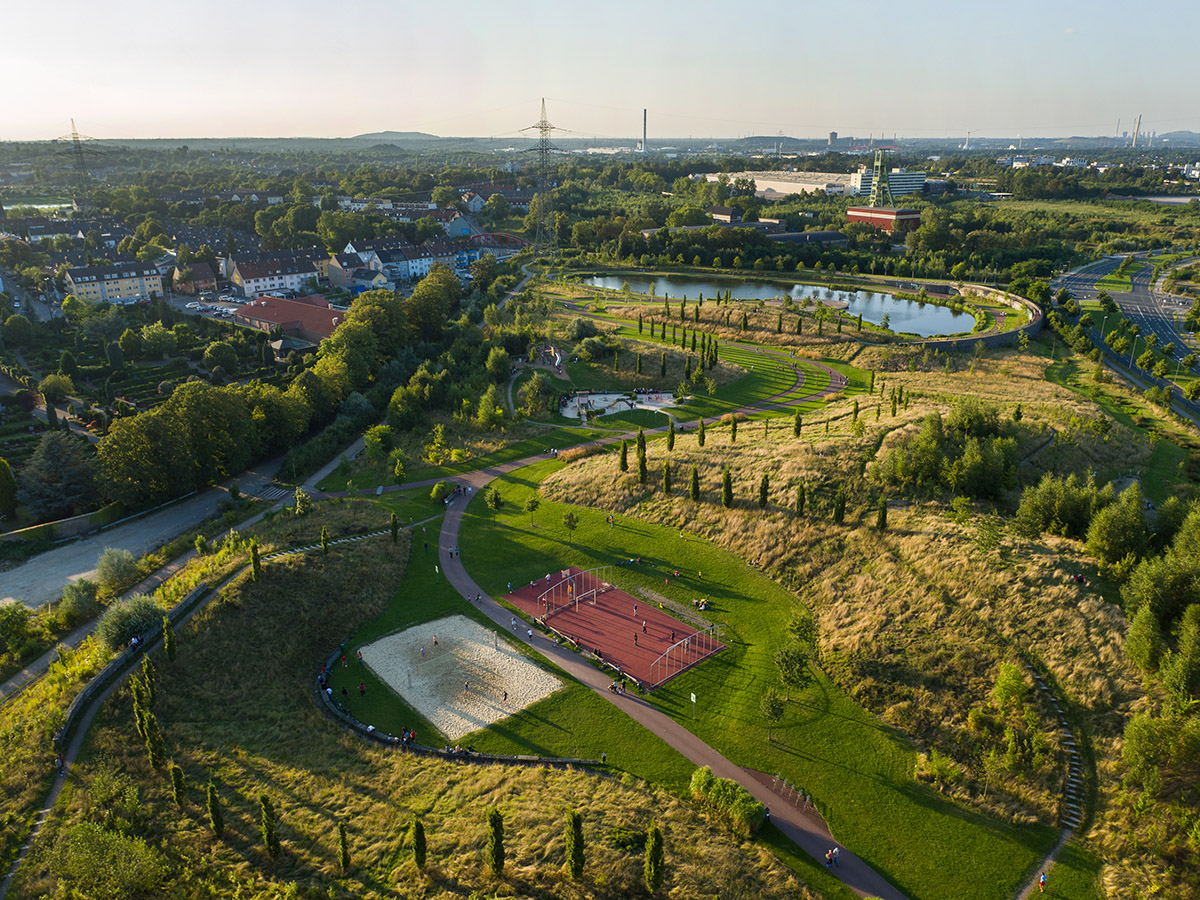
Krupp Park, Essen (Germany), 2006 - 2011. Image © Johannes Kassenberg
Antonello Magliozzi: Italy is rich in culture, historical evidence, but also of many environmental constraints that can limit the activities of designers, landscape architects. What’s your relationship with the constraints of the territory?
Andreas Kipar: When Galasso, after 25 years of effectiveness of his law, wrote a book on landscape plans based on his experience, in a chapter concerning "the efficiency of the constraint", he rightly wrote: "the constraint in itself is null, that what counts is the implementation of the bond". Italy is all rich of constraints, but if the bonds are not implemented, the discipline is annulled; the constraint does not say to not intervene, rather it says to intervene with particular attention. This is synthesized in an exemplary way in the famous phrase of “Il Gattopardo” of Tomasi di Lampedusa: "so that nothing changes, everything has to change”. For example, when I’ve dealt the Palmaria island's Masterplan, in Liguria, opposite the Portovenere town, citizenship, the key figures of local politics called for making no changes to that portion of the territory. In that situation I tried to explain that to preserve the area it needs to make changes. Our projects are processes. The process involves creating an awareness of the real problem first, trying to eliminate the false problems, then proceeding through the right knowledge with a targeted design. It happens that the same politic promotes assignments on false requirements and, in this sense, the best strategy is to try to understand and to illustrate the real problems. The real problem of the Palmaria island, for instance, it was related to the absence of conditions to support the existing agricultural activity. The people who lived in the area were been left alone, and could not do anything anymore, not even to cut the wood, to cultivate. Faced with a strict application of the norm, even the last benevolent peasant goes away.
Antonello Magliozzi: In a context so rich in problems and constraints, what is your planning strategy in finding the solution? A solution according to your idea of Landscape?
Andreas Kipar: I had the honor of participating in the latest work of the great architect Gino Valle, the Portello in Milan. Gino Valle told me: "Andreas let's talk about our project, then we design it". What is often missing is the narration; if we do not have a narrative, we cannot design, as if were missing a “why”. If you can narrate a project in a few words, as if it were an index, a summary, you become an "ambassadors of why". This is for us the architecture of the landscape: a mission in the understanding of the evolutionary state. Indeed, the landscape is as Goethe said something in continuous evolution, a shaped form that only lives by evolving. If you abandon the landscape, it doesn't live anymore. The landscape is nature plus the intervention of culture, and if the intervention of culture is lacking it becomes pure nature, not that cultural landscape of which Italy is proud.
The constraint is always an opportunity to do better. The working model that we apply in Italy we now are exporting it to Switzerland, in Germany, where both the Swiss engineering efficiency and the German economic efficiency have diminished the sense of narrative. The virtue of Italian slowness often also offers the possibility to review the positions. In Germany, once decided it is decided; a thing that sometimes we see as a boast, but that sometimes is also negative. For this reason, we are exporting to projects in progress, a narration that requires more reflection, and we are seeing that in these countries they are starting to be ready for such a process. Quality is something we struggle every day and that we reach through storytelling. The landscape requires long gestation, for the birth of a baby nine months are required, for us are demanded nine years. We are used to very slow processes where it is necessary to imagining the future in some way. When in the '80 years we planted the first trees in the Park North of Milan, these were tall 2 meters, some only 80 cm. If we hadn't had the imagination of their growth in the landscape's form, just as they are today with a height that is up to 20 meters, we would not have had that perception of the future so indispensable in planning. Landscape is the interception of an evolutionary moment of a Society.
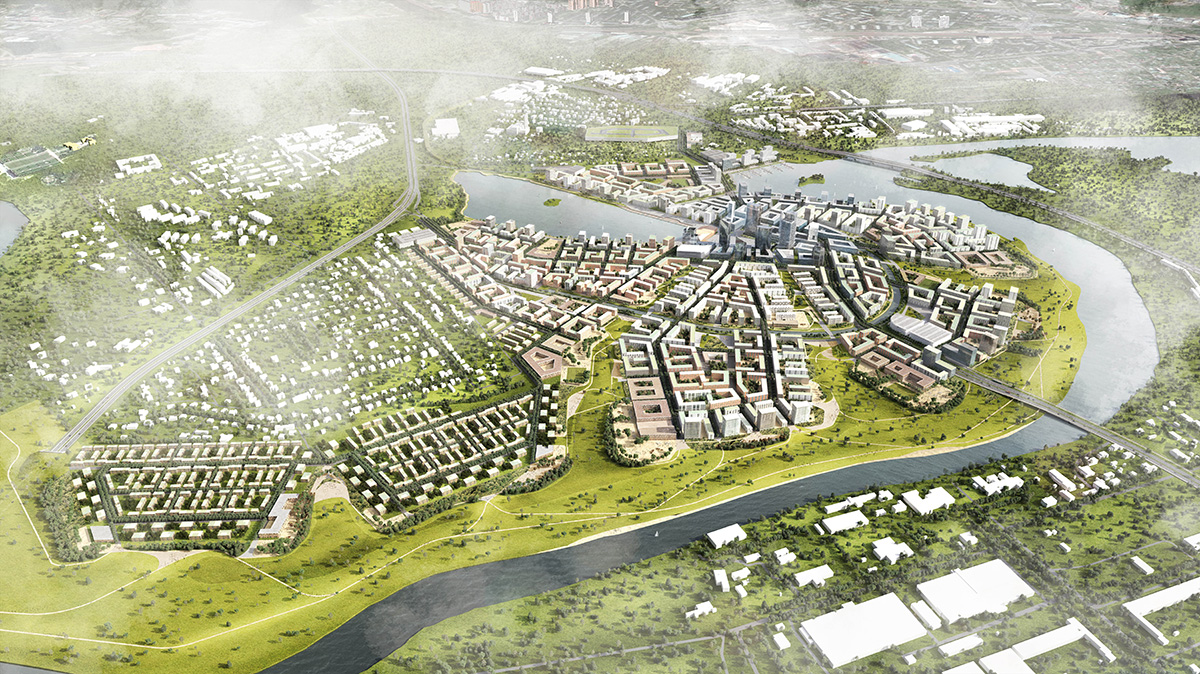
International Financial Center, Moscow (Russia), 2014 – ongoing. Image © LAND
Antonello Magliozzi: Your works, writings and yours researches themselves show your intuition about the needs of the times and, I would say, also a vision that precedes the widespread methodological approach, the procedures that are adopted "officially" in planning, both in theory and practice. What’s your feeling about the current historical moment, and how do you see the future?
Andreas Kipar: I have always been fascinated by history. I see today a speed that is changing history, now also thanks to digitalization processes. The more societies feel this speed of change, the more they cling to their history, to their identity, to their Homeland. The growing strength of the right wing political movements represents a clear sign of fear, fear of change: the fear of the future. Where can we find this identity? In the landscape! Both in the urban and extra-urban environment, in the rural area. Already in 2015, Herzog, by Herzog & de Meuron, said: "Achtung Landshaft!". Warning Landscape! With this he tried to call attention to the unmade parts. In January of this year Rem Koolhaas writes in The Economist: "the future is in the country side". After forty years of thinking towards the megalopolis, globalization, Koolhaas evolves his thinking, capturing in an acute way what happens in the world, and assumes that "the future is in the country side". "You need always both" You always need the city, but without the countryside the city cannot live. Cities are not autonomous.
What will happen in the future? I am not a futurist, the future is not predicted, it is designed, it is in our hands. For this reason, in order to think about the future, it is necessary to elaborate on three themes. The first is: the awareness. Currently there is a cry of pain towards a new awareness; in German it is called the new authenticity, "authentizität". An attention to ourselves and our world, the awareness that we cannot change the global mechanisms of the world, we cannot change the problem of hunger in the world, but we can make a small daily contribution, with a renewed ethics of people. The second theme is: the vocation. We're coming from a period following the industrialization of the so-called modernity, a period in which societies and individuals have been strongly volitional, determined to modify the territory. Everything could be determined. It was possible to bring a steel mill to the Gulf of Bagnoli. The state wanted it, and the money was there. It was possible to bring a steel mill to the Gulf of Taranto for the same reasons. Today we no longer have certainties and instead seek to treat wounds. Today we need to listen to the vocation of time, of what it surrounds us: of the territory. We can't be all equal, each has its own vocation and also the territory has its own vocation. For Liguria, in the past a land location of hunger and poverty, which has certain produced both suffering and the great beauty of its territory, do I have now to preserve the terraces of its coastal hills, or can I transform part of its territory, following its old vocation: the Woods? Is a process tha needs to be driven.
The third theme is: the contact with Nature. A population that lives with technology and depends on it, looks for signs of life. Green is the element that gives these signs of life. Today there is a boom in crazy greenery. People want to see the green, inside and outside their home: on the balcony, on the terrace, in the garden, in the park, in the city. A boom that started in 2007 from the city of New York, with the PLANYC plan "A Greener, Greater New York", as a bold agenda to meet the future challenges till 2030. An attention to the contact with nature also recalled in the Laudato sì of Pope Francis (encyclical letter of 24 May 2015), that invites humanity to take care of its planet. This attention is spreading all over the planet. With these three themes the "After-Modernity" must not invent anything new. We must "put in network" what we already know, and do not yet do. Today we're working on the new landscapes of the post-industrial age. We are not just talking about decommissioning and re-naturalization of sites, but also about the creation of a new productivity and a new social life as well. We're talking about inclusion. Today our projects are changing, they are becoming simpler in essence, and less sophisticated in thinking and design. Simplicity in the sense of efficacy, thanks to the help of the tools of technology, such as the LIM ®, which allow to verify, control the performance of the landscape, in every phase (plant, growth, maturity) and in every point of view: functional and psychological. On the one hand, the agricultural productivity's quantification, the bioclimatic improvement, the increase of biodiversity, on the other the non-tangible, intangible benefits of contact with natural elements. Our projects are now born in the awareness of wanting to trigger a process of return to nature lasting one hundred years, through green infrastructures.
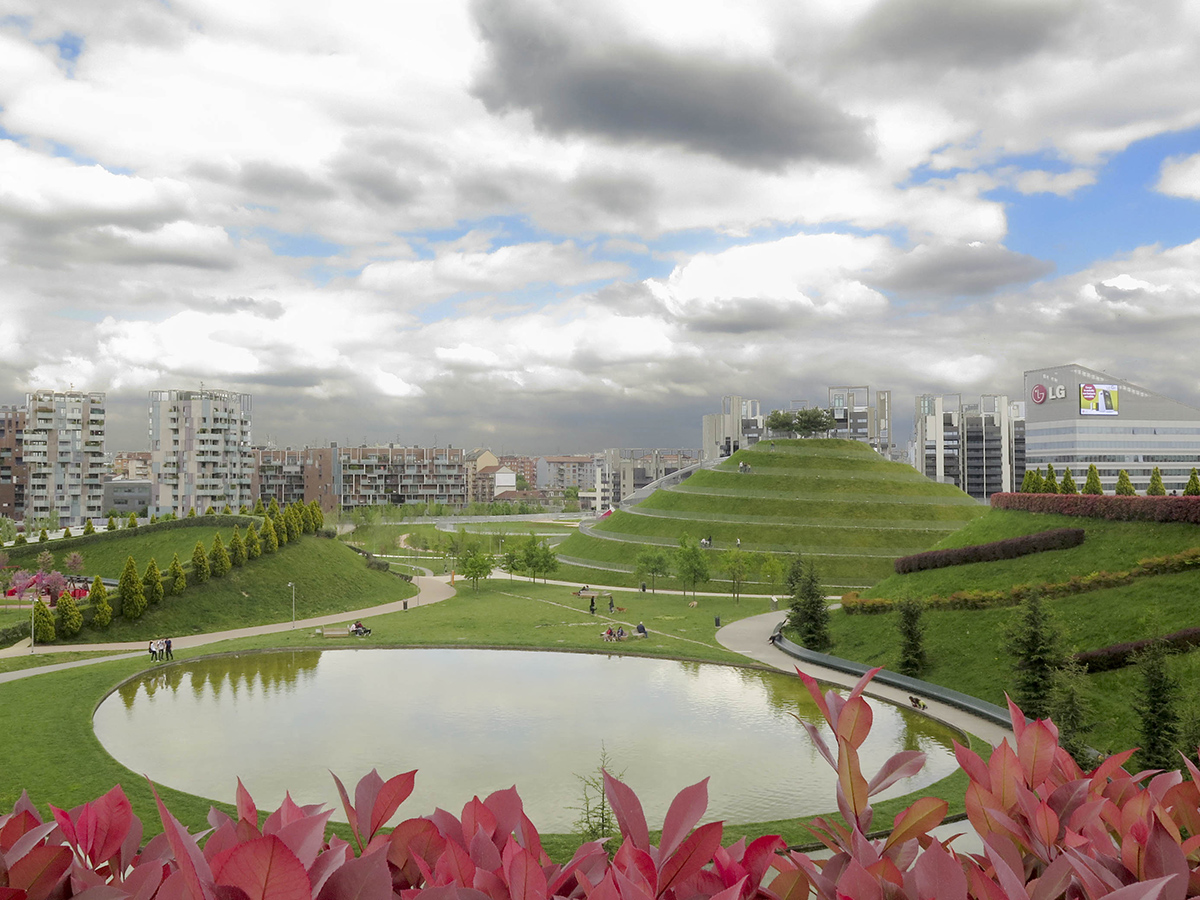
Portello Park – Ex Alfa Romeo Area, Milan (Italy), 1997 - ongoing. Image © LAND
Antonello Magliozzi: A final obligatory question concerns the most important event currently underway, the Venice Architecture Biennale and your contribution to the Italian Pavilion's Technical Scientific Committee. Could you tell us about the contents of the Event from your point of view?
Andreas Kipar: Mario Cucinella as curator of the Archipelago Italia, has had the intuition to represent the dialectic of architecture between interior space and outer space, favoring the exterior. It represents Italy made of the hundred cities in the background of its landscape, almost as if it were a virtual journey for the beautiful Italy. The beautiful country, “il Bel Paese”, always defined as such for the built part, but the beautiful country is also the landscape itself. In this framework, it is shown that the parts less exposed to the energetic thrust of transformation require the same design effort, choices linked to reuse, for instance with bridges, through intelligent by-pass that "set the system", which can enhance further the vision and the usability of the whole territory.
Before this Biennale, there had never been such an ambitious theme of free-space, open-space, something not related to design alone. No longer just the form, but also the free-space; not only that of the metropolitan areas where there are political interests, but also that of the open territory surrounding the so-called Archipelago. This Biennale is creating a new type of architects. The architects of the future's landscapes, who will immerse themselves in the territory and become part of the landscape through their own eyes, those of the observer. Then, paraphrasing Renzo Piano's idea on careful interventions, they'll can conceive the project as “mending an old sweater”. This through so many small interventions, which must not necessarily be expensive or glorious, which must be only one thing: normal, and which must fit into the dialectic of everyday life. The laboratory tables of the Biennale are designed not to end with the event, but to continue, indeed to start the real work later. Free-space open space for everyday life, not open space to be filled with a wave of design, but to be lived in its entirety.
Top image courtesy of LAND
